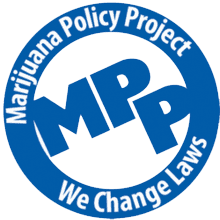Condition Report: Dystonia
October 22, 2019In 2017, the National Academies of Science, Engineering & Medicine released a comprehensive report, “The Health Effects of Cannabis & Cannabinoids”, based on the research that had been done to date. Following that valuable report, we’ve been providing weekly Condition Reports on 2018 research for each of the conditions cited in that report, such as chronic pain, cancer, anorexia, and more – these reports seek to provide evidence for both medical benefits and risks for each condition.
Because prohibitive cannabis regulations have, for years, limited the amount of available information, we believe it is important to educate the public about up-to-date research. Although medical cannabis usage is still both controversial and inconclusive, the World Health Organization has urged for nations to remove cannabis from Schedule IV from their list of drug scheduling, which would allow the protection for researchers to conduct more comprehensive studies.
Canneconomy.com and its affiliates aim to provide general information about cannabis consumption in the hopes for policymakers, users, researchers, and the general public to make informed decisions about cannabis and its derived products. In order to do this properly, we must seek and report the best available research for a better understanding of cannabis as it takes on the medical field.
For an overview on how cannabis can be used to treat other medical conditions, please visit the following Condition Reports:
- Chronic pain
- Cancer
- Anorexia & Weight Control
- IBS
- Epilepsy
- MS & Spinal Cord Injury
- Tourette Syndrome
- Amyotrophic Lateral Sclerosis (ALS)
- Huntington’s Disease
- Parkinson’s Disease
Dystonia Highlights:
-The objectives for dystonia treatment are to decrease abnormal movements, prevent musculoskeletal complications, alleviate pain, and resolve sleep problems.
-Many pharmacological treatments can cause severe side effects and may not be suitable for children.
-One study found that CBD products improved spasticity, sleep problems, and pain severity; however, some adverse effects were also reported, including deterioration of convulsions, behavioral changes, and drowsiness.
THERAPEUTIC FINDINGS: DYSTONIA
The objectives of complex motor disorders treatment, including those of dystonia, are to improve the quality of life achieved through a decrease of abnormal movements and tones; to prevent musculoskeletal complications; to alleviate pain and to resolve sleep problems (Barco et al., 2018). Therapeutic options range from pharmacotherapy through invasive medical and non-medical procedures, for example, botulinum toxin injection, baclofen pump, selective dorsal rhizotomy, and deep brain stimulation (Barco et al., 2018). However, the pharmacological treatment for these conditions, particularly in the pediatric population, is limited as some drugs can cause severe side-effects, and some may not be approved for children. Cannabinoid therapies for neurological diseases, medicinal epilepsy, and movement disorders, have been recently studied, but their methodology and results are controversial.
A study conducted by Libzon et al. (2018) included a total of 20 patients (aged 1-17 years), who completed a 5-month pilot study approved by the Committee on Institutional Ethics (CIE). Two cannabidiol products enriched with 5% cannabis oil formulation were compared, and no matter the treatment assignment, significant improvements in spasticity and dystonia, sleeping problems, pain severity, and QOL were observed (Libzon et al., 2018). However, adverse effects, including deterioration of convulsions, behavioral changes, and drowsiness, were displayed even though these were rare (Libzon et al., 2018). While Libzon et al. discuss the study did not constitute a double-blind placebo-controlled setting, several significant improvements were evident from a global perspective. Thus, cannabinoids could be considered as an additional palliative treatment strategy in advanced dystonia in Huntington’s disease patients
On the contrary, a recent national Australian survey indicated that 13% of parents tried or used illegal cannabis extract to manage their child’s seizures, which prompted Suraev et al. (2018) to conduct semi-structured interviews with families of children in the country with various forms of epilepsy to explore their attitudes to cannabis extracts and their experiences.
The family sample size using cannabis extract was 41, whereas as those families not using cannabis were 24 (Suraey et al., 2018). For cannabis users, extracts were analyzed for cannabinoid contents, with a specific comparison between families rated as “effective” and “infective”. Results showed that children with cannabis extracts had tended to have more severe epilepsy and have tested more anti-convulsant than children who have never had cannabis extracts. The content of cannabinoids and the profile of cannabis extracts was highly variable, with no apparent differences between extracts considered effective or ineffective (Suraey et al., 2018). Contrary to family expectations, most samples contained low cannabidiol concentrations, while TOF 9-tetrahydrocannabinol was present in virtually every sample. These samples highlight a profound variation in illegal cannabis extracts currently used in Australia (Suraey et al., 2018).







